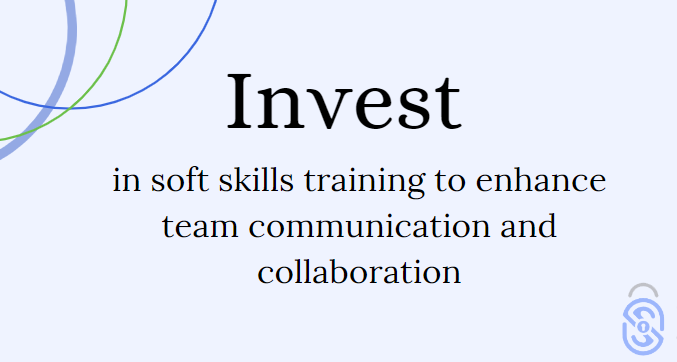Healthcare service delivery is an essential part of modern healthcare. Hospitals, clinics, and other healthcare facilities must be able to provide the right services to patients at the right time and at the right cost. Healthcare service delivery also needs to be highly coordinated with other departments such as HR, procurement, and finance. The success of any healthcare organisation hinges on how well service delivery processes are put into action. In this article, we’ll look at common challenges in healthcare service delivery and best practices for addressing them. Keep reading to learn more.
Understand The Healthcare Market And Common Systems
A key part of creating the right healthcare service delivery strategy is to understand how others do this, particularly during difficult situations, such as the recent COVID-19 pandemic. After all, healthcare doesn’t exist in a vacuum, so healthcare delivery providers need to understand how the market works and what others are doing. Learn more about common market research tools in healthcare industry to stay updated on trends and changes. Some of the most widely used tools include SWOT analysis, Porter’s Five Forces Model, and PESTLE analysis. Each of these tools provides valuable insights into the healthcare market and competition. To get an overview of healthcare systems and the lessons we can learn from the pandemic and other major healthcare events, check out this online course from the London School of Economics and Political Science. To get an overview of healthcare systems and the lessons we can learn from the pandemic and other major healthcare events, check out this online course from the London School of Economics and Political Science.
Continuously Improve Quality By Regularly Reviewing Processes
The best way to continuously improve quality is to regularly review your processes in order to identify any gaps. This is a good practice to follow in all areas of healthcare service delivery. There are many ways to do this, such as process mapping, gap analysis, and value stream mapping. Process mapping can help you improve the effectiveness of your service delivery process because you can see where improvements can be made. Gap analysis is a checklist that looks for gaps in your processes. It can help you identify areas of weakness in your service delivery process. You can then use this insight to create a plan for improvement. Value stream mapping is a diagram that shows the path a product (or service) takes from start to finish. It can help you identify how to improve your service delivery processes by highlighting areas where there might be delays or inefficiencies. Another complementary method involves leveraging the software used by care management agencies for process optimization, enhancing service delivery, increasing patient satisfaction, and driving quality improvements without pushing up the cost of doing business.
Measure The Effectiveness Of All Quality Improvement Efforts
Healthcare organisations often face challenges when it comes to measuring the effectiveness of all quality improvement efforts. Managers need to find ways to measure the effectiveness of their efforts so they can track progress. There are many different methods you can use, and many of the ways you can identify gaps during the review process can also be used to help measure the effectiveness of the improvements. Additionally, you can also invest in quality management software, which will help you evaluate the effectiveness and manage further quality improvements.
Offer Staff Training In Soft Skills
When managing healthcare service delivery, managers need to make sure staff are trained in soft skills. This means staff are trained in how to communicate effectively, how to work as part of a team, how to resolve conflicts and other skills. Healthcare service managers need to make sure they are providing soft skills training for all staff. This enables them to engage better with patients and other employees. They can then work together to provide high-quality care.

Focus On Patient Engagement
Healthcare service managers must focus on patient engagement. This means healthcare providers must work to actively engage with patients. Engaging with patients includes things like building trust, offering clear communication, and providing useful information. All of these things help to create a positive experience for patients. Periodically, healthcare service managers should conduct patient satisfaction surveys. This allows them to gain insight into how patients feel about their experience. It also gives them a chance to identify areas that need improvement. By engaging with patients, healthcare providers can ensure patients feel welcome and are well informed. This can help reduce the number of no-shows, which may otherwise occur if patients are unhappy with their experience.
Improve Access To Care
Managers should work to ensure their departments are providing the right services to patients at the right time. This can help reduce wait times, ensure patients receive the care they need, and improve the staff-to-patient ratio. Assessing needs is a great way to identify ways to improve access to care. You can do this by regularly collecting and analysing data. This will help you identify trends and shifts in patient needs so you can respond accordingly. There are many ways to assess needs, including needs assessment surveys, needs assessments based on service delivery, and needs assessments based on client outcome goals.
Conclusion
Healthcare service delivery is an essential part of modern healthcare. Hospitals, clinics, and other healthcare facilities must be able to provide the right services to patients at the right time. The success of any healthcare organisation hinges on how well they put service delivery processes into action. Gain essential healthcare systems knowledge with an online course, continuously improve quality by regularly reviewing processes, measure the effectiveness of all quality improvement efforts, offer staff training in soft skills, focus on patient engagement, and improve access to care.
